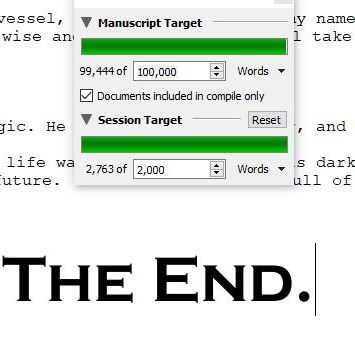I actually finished writing the book! Well, I finished the first draft.
I printed out all 99,444 words. Printed out (with wide margins for editing), that’s about 530 pages. It’s massive!
So, now what?


1.Take a break.
Many authors say to take a break away from your first draft. This is to allow you to come back to the book with fresh eyes. It will be easier to edit and revise effectively after a break.
The suggested length of the break can range from a few days to two weeks, to even a month or two. During the break, suggestions to fill your time include drafting a sequel, planning a new project, reading, or catching up on your hobbies.
I took two days before I edited the first 9 pages. I’m partially afraid that if left alone to long, the book won’t get edited.
2. Read the book. Possibly get Alpha Readers
Read it through one time. For the first read-through, do not take notes or edit. Just read it. This will give you a better idea of plot holes and inconsistencies.
If you have a trusted alpha reader, you may wish to give the rough draft to them. An alpha reader is someone that you trust to give you a KIND but HONEST review of the rough idea of your story. They should tell you what they loved, what they didn’t understand, plot points you need to clear up, etc.
Do not expect or ask your alpha readers to do line edits (grammar).
3. Examine the big picture.
After the first read through, get out your notebook and fancy pens. It’s time to take notes on the big picture. Read with an eye on plot development and make notes for big holes and changes you need to make. Remember to look at your main and secondary story arcs to ensure they each flow nicely.
4. Pacing
Make notes on how the story’s pacing is. Where does the story drag, where should there be conflict, is there too much action and not enough internal development? Are the moral dilemmas understandable?
5. If you have to kill a character, channel George R.R. Martin.
If the seriousness of your conflict and plot require the sacrifice of characters, put on your big writer pants and kill them off. If you feel sad, channel George R. R. Martin as you do it.
6. While you are thinking about your characters, take a closer look.
Are they true to their personalities? Do their actions make sense with their motivations? Are they static? Or dynamic?
Several authors suggested creating pinterest boards for the characters to get a visual for the characters, have a better idea of what music they would like, hobbies they would have, etc.
7. Still thinking about characters, how do they develop?
Examine the overarching story arcs. How are the character developments mirroring the plot advancement?
Think about their goals and needs. How do these develop as the story progresses?
8. Pay attention to the details
Make sure that you have clearly included the themes, POV, World-building, magic systems, scientific advances, etc.
Take notes and plan how to fix what is lacking or underdeveloped in the current draft of the manuscript.
9. Plan it out.
Plan how you want to revise. Do you want to do it chronologically (chapter by chapter)? Do you want to do several sweeps through the manuscript, one for the plot, one for the characters, one for theme, etc? Do you want to do one massive revision of everything all at once?
10. Let it rest.
See #1.
11. Line Edits
Go through the manuscript (now the second draft!) sentence by sentence. Are the sentences necessary or are they filler? Look carefully at the word choice, syntax, punctuation, and all the grammar things.
12. Find Beta Readers for Feedback.
Listen to what the beta reader, as a casual reader to your book, has to say. Beta readers will likely find things that you either lost sight of during your edits, or that you and your alpha reader had not thought of yet.
13. Revise again.
Revise to include the parts of beta reader feedback that you agree with.
Edit and revise as many times as necessary.
14. Find an editor
Find an editor for developmental and line/copy edits.
15. Decide which publishing route you want to go.
Traditional publishing and self-publishing require an entirely different set of next steps to take, so you have to ultimately make a decision as to which route you want to take.

I’ve added the first round of edits to this month’s to do list in my bullet journal. I am excited to edit this book, but I have a feeling it’s going to take far longer than I originally thought. But that is fine! I’ve got several other projects line up to switch to when I get tired of editing, and I’m just excited to be working on my own book!
Coming Saturday:
I Doubled My Word Count and Nearly Tripled My Subscribers in One Month!
I just finished my 1st draft as well and so this is very helpful to figure out my next steps! Im planning on not going back to it for at least a month or two – with maybe some brainstorming in between as I know It’ll completely change
LikeLiked by 1 person
I know that I shouldn’t go back into it quite so soon, but I’m afraid that if I let it sit, I will abandon it.
LikeLiked by 1 person
I totally have the same fears! It’s a hard balance
LikeLike